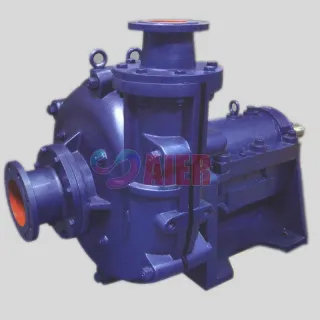ພ.ຈ. . 07, 2024 17:02 Back to list
Design and Functionality of Slurry Pump Casings for Enhanced Performance and Durability
Understanding Slurry Pump Casings Design, Functionality, and Applications
Slurry pumps play a crucial role in various industries, including mining, construction, and wastewater management. These pumps are specifically designed to handle mixtures of liquids and solid particles, known as slurries. A key component of a slurry pump is its casing, which significantly influences the pump’s performance, efficiency, and longevity. In this article, we will explore the design, functionality, and applications of slurry pump casings.
Design Considerations
The design of a slurry pump casing is paramount to its ability to handle abrasive materials and high solid concentrations. Typically, slurry pump casings are made from materials such as high-chrome alloys, rubber-lined components, or softer metals that can withstand the erosive nature of the slurries they will encounter. The choice of material depends on the type of slurry being pumped and the expected wear and tear.
Casing designs often feature a volute or centrifugal shape, which helps manage the flow of slurry within the pump effectively. The volute design allows for smooth fluid dynamics, minimizing turbulence and enhancing the overall efficiency of the pump. Additionally, many slurry pump casings are designed with a split casing, which enables ease of maintenance and reduction of downtime during repairs.
Functionality
The primary function of a slurry pump casing is to contain and direct the mixed liquid and solid materials while ensuring optimal performance during the pumping process
. In addition to containing the slurry, the casing must also provide a seal to prevent leaks, which is essential for maintaining efficiency and operational safety.Slurry casings are engineered to support high pressures and varying temperatures, depending on the application. For instance, in mining applications, the pump may handle slurries at high pressures and temperatures, making robust casing design crucial. Moreover, the casing must be able to absorb vibrations generated during operation, which can otherwise lead to mechanical failures and increased maintenance costs.
slurry pump casing

Wear and Maintenance
One of the most significant considerations in slurry pump casing design is wear resistance. The presence of solid particles in the slurry can cause rapid wear and tear on the pump casing. Therefore, manufacturers often implement different wear-resistant materials and protective linings to extend the life of the casing. Regular inspection and maintenance play an important role in mitigating wear. Operators should monitor the casing for signs of erosion or damage, which might compromise the pump’s efficiency.
Furthermore, advancements in technology have introduced innovations such as ceramic coatings and self-lubricating materials that enhance the durability of slurry pump casings. These innovations help reduce maintenance costs and downtime.
Applications
Slurry pump casings are utilized in various industrial applications, reflecting their versatility and essential role in liquid-solid transportation. In the mining sector, slurry pumps are employed to transport mineral-rich slurries to processing facilities. The abrasive nature of the materials necessitates robust casings to withstand the rigors of operation.
Similarly, in the construction industry, slurry pumps are used to manage cement and other particulate slurries, essential for foundation work, tunneling, and other construction activities. Wastewater treatment facilities also rely on slurry pumps to deal with sludge and other thick liquids, underscoring the importance of an efficient casing design in maintaining effective operation.
In conclusion, slurry pump casings are indispensable in the functionality of slurry pumps, providing the necessary containment, support, and protection required for efficient operation in demanding environments. As industries continue to evolve, so too will the designs and materials used in slurry pump casings, driven by the need for improved performance, durability, and cost-effectiveness. Understanding these components is critical for anyone involved in the design, maintenance, and operation of slurry pumps, ensuring that they can effectively tackle the challenges posed by abrasive and high-density slurries.
-
High-Quality Sand Suction Dredge Pump Factories Durable & Efficient
NewsMay.22,2025
-
High-Quality Interchangeable Slurry Pump Spare Parts Supplier China
NewsMay.22,2025
-
China Gravel Dredge Pump - Heavy-Duty Slurry & Sand Dredging
NewsMay.22,2025
-
Durable Centrifugal Wastewater Pumps China Abrasives Pump Suppliers
NewsMay.21,2025
-
High-Quality Horizontal Centrifugal Slurry Pump China Factory & Supplier
NewsMay.21,2025
-
China Slurry Pump Rubber Parts - Durable & Custom Solutions
NewsMay.20,2025
